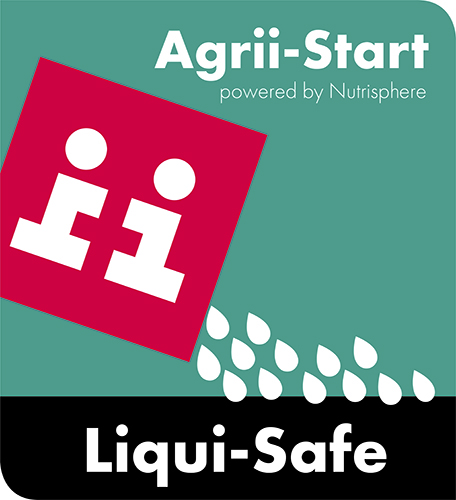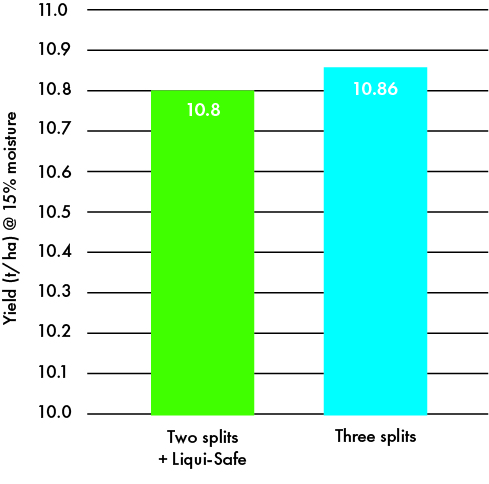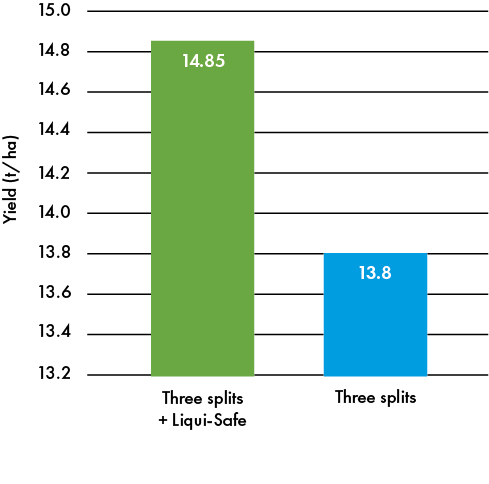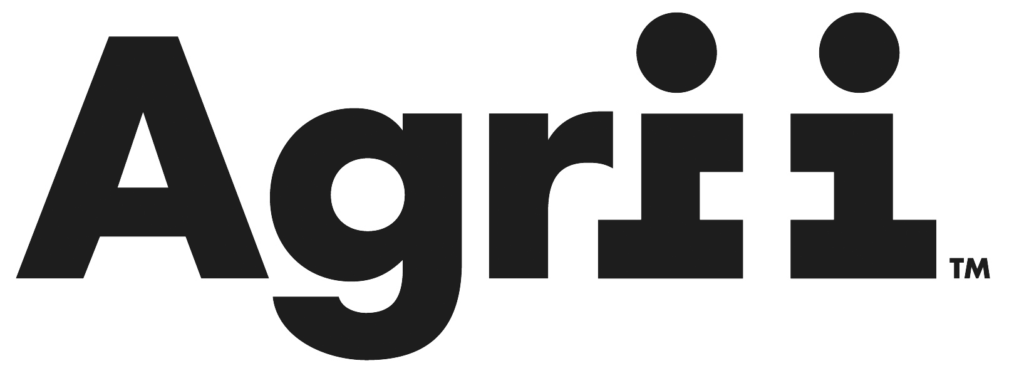Liqui-Safe delivers a range of technical and practical benefits but the savings in nitrogen are likely to be of greatest interest to growers. Tom Land explains what makes it a compelling proposition.

Liqui-Safe is a urease and nitrification inhibitor containing NutriSphere-NL, an organic polymer that acts as a complexing agent to prevent metal ions in the soil from degrading the applied nitrogen. It is added to the sprayer tank via the induction hopper at the time of filling and is compatible with all nitrogen and nitrogen-sulphur blends of liquid fertiliser. There are similar products on the market, but they are typically either a urease or nitrification inhibitor, not both and none have the environmental or operator safety profile to match Liqui-Safe.
Liqui-Safe is effective at all application timings. It can be added to early spring applications, i.e. before 31st March, when the risk of nitrate leaching means growers would either make a light application or delay it until a later date. The nitrification inhibitor in Liqui-Safe not only enables applications at this early timing, but also reduces leaching and allows for higher rates. This means the number of split applications needed to deliver the full rate can be reduced.
The use of Liqui-Safe has been shown to improve the nitrogen use efficiency of urea ammonium nitrate (UAN) by up to 15%. By keeping the fertiliser where it is needed for longer, crop yields and quality are improved. In three years of trials spanning six different crops, yields increased by 4% on average compared with untreated UAN.
For applications after 31st March the urease inhibitor serves to reduce ammonia losses that occur through volatilisation making Liqui-Safe Red Tractor compliant. Liqui-Safe blocks three of the mechanisms that promote volatilisation within the nitrogen cycle to reduce ammonia losses by up to 86%.
A benefit of Liqui-Safe is the ease at which it can be handled. It is available in 20-litre cans and IBC’s with a full inclusion rate of 0.5% or 5 litres per 1000 litres of liquid. By adding to the sprayer tank at the time of application its properties are not impacted by sitting in solution with sulphur-containing fertilisers which has been found to degrade the performance of some inhibitors.
In addition to full product compatibility, it is completely crop, soil and water safe. Over time, it breaks down into nothing more than carbon, hydrogen and oxygen molecules. It has been shown to support the soil biome through increased Mycorrhizal activity. Work by academics in Europe found that 69 days post-application, there was a 74% increase in soil microorganisms compared with land that received untreated UAN.
By using Liqui-Safe growers can cut the overall application rate applied and the number of passes needed to satisfy crop requirements. Trials indicate that a two-split programme with Liqui-Safe used at both timings delivers yields broadly the same as that achieved with a conventional programme based on three splits – see Fig. 1.
Alternatively, a conventional three-split programme comprising 70 kg N/ha; 86 kg N/ ha; 80 kg N/ha and featuring Liqui-Safe will improve yield potential – see Fig. 2.


The practical and technical benefits of Liqui-Safe combine to support improved enterprise performance. Based on the full-rate 0.5% inclusion, the product costs are modest at roughly £10/ha. Where application rates are reduced in response to less losses, we see average savings of up to £24/ha. This is increased further where the savings in application costs are considered.
Liqui-Safe advantages
- Less nitrogen losses
- Lower ammonia emissions
- Fewer split applications
- Improved yield potential
- Easy to handle and mix
- Improved nitrogen use efficiency
- Red Tractor compliant
- Increased in soil mycorrhizal activity post-application
- Backed by independent trials and data
Better nitrogen retention, better surface water quality
UAN + Liqui-Safe applied in a crop of fodder maize significantly reduced the movement of soil mineral nitrogen (SMN) through the soil profile over a 5-month period post-fertiliser application. Liqui-Safe maintained SMN in the upper soil levels and reduced SMN by 34% at a depth of 90cm compared with a standard UAN treatment.
Wessex Water, 2019
Liqui-Safe reduced nitrate losses across the soil profile even under heavy rainfall conditions. Compared with UAN alone the combination of UAN + Liqui-Safe demonstrated a 54% reduction in nitrate levels. This effect was observed four days after fertiliser application to a depth of 60cm, meaning nitrogen was retained in a more usable stable form closer to the root zone.
John Innes Centre, 2019
In a field tile drain over a three-month period in winter wheat in Norfolk, UAN + Liqui-Safe treatment compared to standard UAN application reduced the detectable nitrate levels in the outflow from the field tile drains into a water course consistently by 14% and a reduction up to 24% was recorded.
NIABTAG, 2020



